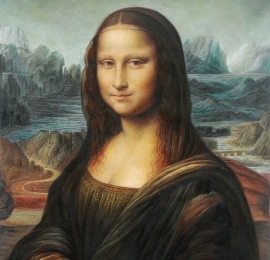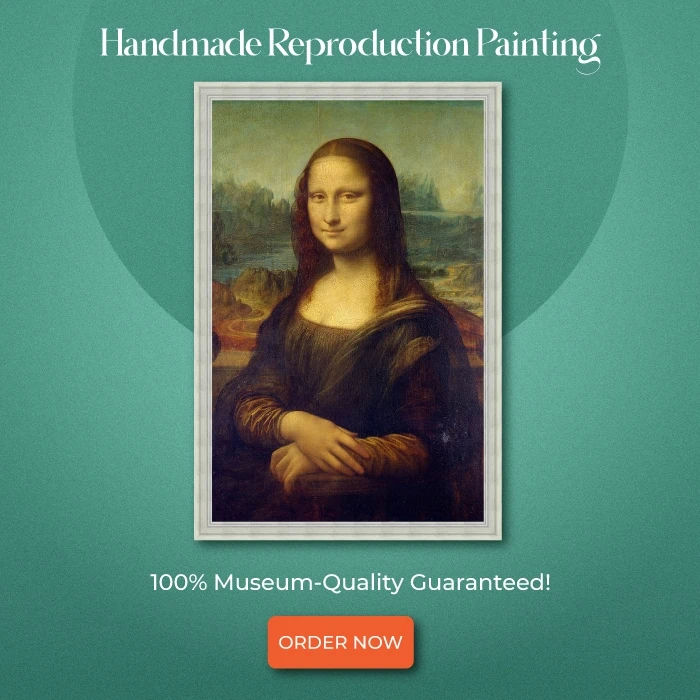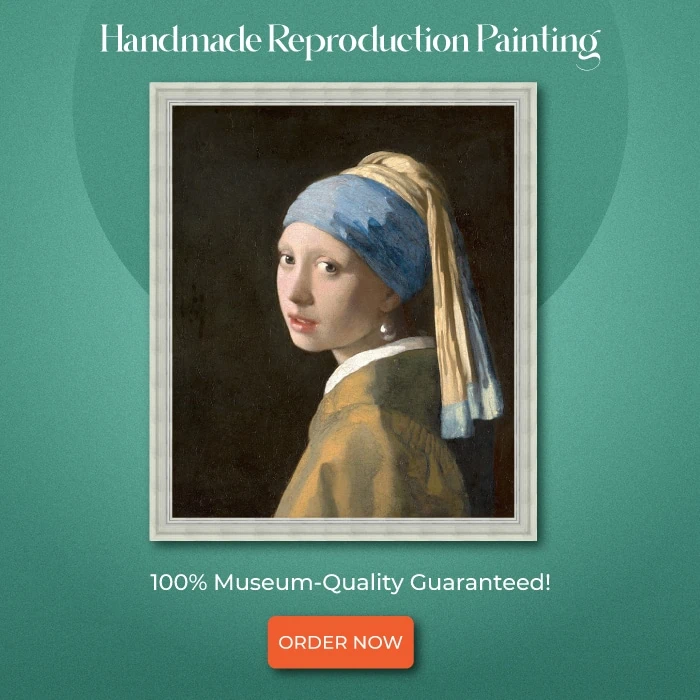The Baroque art style was a cultural movement that lasted between the 16th and 18th centuries.
It was a style of art that flourished in Europe, and the famous artist, Caravaggio was the father of the Baroque painting style.
There were a lot of Baroque artists who joined the movement and later rose to fame.
Baroque artists along with their painting styles emphasized on conveying human emotions, facial expressions, a moment in time and dynamism.
Baroque art was often portrayed as paintings, sculptures, architecture and designs.
Interestingly, the genre to deliver subject matter were, landscapes, portraits, still life and history paintings.
Baroque artists used deep shades of red and brown and high contrast elements that highlighted the subject and used the shadow effects for adding more dramatic effect to their artwork.
So, this was about the art style, now let’s take a look at the artists who played a major role in pushing the success of Baroque art!
Table of contents
- 1. Caravaggio (1571-1610)
- 2. Rembrandt (1606-1669)
- 3. Johannes Vermeer (1632-1675)
- 4. Peter Paul Rubens (1577-1640)
- 5. Nicolas Poussin (1594-1665)
- 6. Artemisia Gentileschi (1593-1656)
- 7. Elisabetta Sirani (1638-1665)
- 8. Mary Beale (1633-1699)
- 9. Diego Velázquez (1599-1660)
- 10. Gian Lorenzo Bernini (1598-1680)
- 11. Francisco De Zurbarán (1598-1664)
- 12. Anthony Van Dyck (1599-1641)
- 13. Philippe De Champaigne (1602-1674)
- That’s It With The Artists
- Author’s Note
- FAQs
1. Caravaggio (1571-1610)

The rowdy painter of the 16th century, who was the first Baroque painter, is none other than Michelangelo Merisi da Caravaggio.
Caravaggio is known as the father of Baroque painting. His style is seen directly and indirectly in Rubens, Jusepe de Ribera, Bernini, and Rembrandt’s work.
His work has impacted a lot of artists from the artistic generations that also followed him and became a ‘Caravaggisti’.
Paintings by Caravaggio were famously known for using the chiaroscuro technique in his artworks. This technique involved the presence of dark shadows to highlight the subject.
He was known to paint directly on the canvas and also enlighted a way for development of tenebrism in paintings.
His criminal background and behavior always seem to cause a problem in his life. The reason behind his death has not been confirmed till date.
But it is believed that before his death in the year 1610, he showed some concerning mental health related issues.
Some of his famous artworks are, Bacchus (c. 1596), Medusa (1598), Judith Beheading Holofernes (1598 – 1599), etc.
2. Rembrandt (1606-1669)

Rembrandt Harmenszoon van Rijn was a Dutch Golden Age painter, the greatest painter in European art, and master of Baroque style.
Rembrandt’s love for paintings sprouted at a very young age, and with dedication, he spent three years under the apprenticeship of a local history painter.
After another six month’s apprenticeship with painter Jan Pieter Lastman, at the age of 21, he opened his own studio and started teaching painting to the other painters of the Baroque.
In 1631, he moved to Amsterdam, where he rose to fame by making and selling personal portraits.
Despite facing financial issues in his later life, he lived beyond his means, and this Baroque painter spent a lot on his art supplies.
His expenses made him go bankrupt, which ultimately led him to sell all of his antiques.
Some of his famous paintings are, The Storm on the Sea of Galilee (1633), The Night Watch (1642), The Jewish Bride (1665), etc.
And now you can even have some of his most famous paintings hanging from your most beautiful walls, improving the décor of your place.
Just check out our Rembrandt replica painting gallery for more info.
3. Johannes Vermeer (1632-1675)
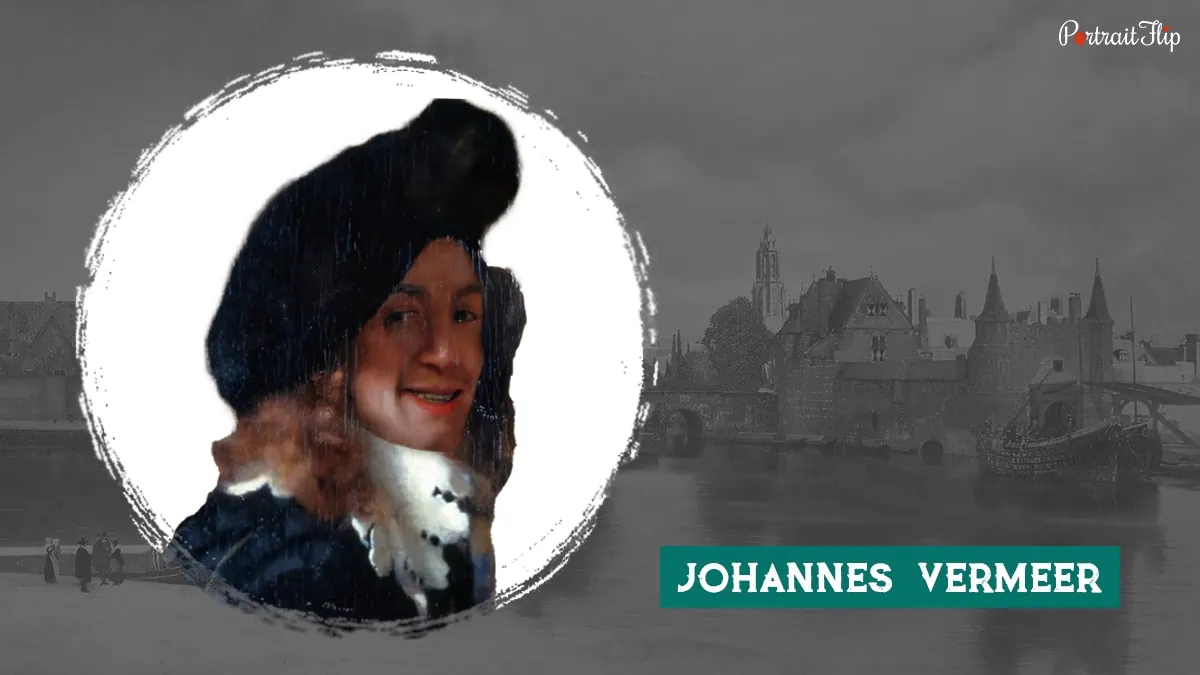
Johannes Vermeer, a Baroque master who was famous for displaying the life of a middle class citizen.
As a Baroque artist, his theme based paintings caught the viewer’s attention. Some of his artworks like The Milkmaid even testified for his expertise in depicting domiciliary scenes.
To the surprise, Vermeer painted only 45 artworks throughout his career out of which only 36 artworks are still there today.
Paintings by Vermeer were known for his Baroque style and he used to experiment with colors and lights to give the paintings a more lively effect.
He was inspired by the paintings by Leonardo Da Vinci, who said that the color gradient differs along with the surfaces and the other elements present in the room.
He has created some of the most famous paintings of the Baroque art era like, Girl with a Pearl Earring (1665), View of Delft (1661), The Art of Painting (1668), etc.
These magical paintings are something that any individual would like to own. What if I say that these priceless artworks could make it your walls?
Check out Vermeer reproduction paintings at an affordable price starting at $210 which is customizable according to size you choose.
4. Peter Paul Rubens (1577-1640)

Peter Paul Rubens, one of the most influential Flemish Baroque artists of the 17th century.
As a Baroque artist, he focused on the movement via his work and also he emphasized on bringing the sensuality out of the image.
He was not only a painter but he was also a designer, and he also has authored a book with various illustrations of the different palaces in Genoa.
This book was published in the year 1622 by one of the best Baroque painters, none other than Peter.
His work majorly belonged to historical subject matter, classical mythology, and hunting scenes.
As a fact of surprise the honorable Baroque artist had also served as a diplomat who was entitled as a knight twice by Philip IV and Charles I in Spain and England.
He was heavily criticized and was praised as well for his depictions of the female body in the form of nude paintings in mythology.
It emphasized the female body as a reflection of beauty, temptation, and sexuality as seen through the male gaze.
Some of his famous work includes, The Elevation of the Cross (1610), Massacre of the Innocents (1612), The Three Graces (1635), etc.
5. Nicolas Poussin (1594-1665)

Nicolas Poussin was a French Baroque artist who worked majorly and actively in Rome.
He is known as the leader of the French Baroque period and founder of the French classical tradition.
He used lines in his paintings to provide more clarity and neatness to the artwork, which made him one of the greatest Baroque painters.
Many French and Italian art collectors loved his works, which were based around the themes of religious and mythological sceneries, traditional subjects, and landscapes.
An interesting incident that happened with Nicolas is that he was called to paint for the king of France, he even came back to France but returned back to Rome soon due to the intense work pressure.
His famous artworks include, The Death of Germanicus (1626 – 1628), A Dance to the Music of Time (1634 – 1636), The Triumph of Pan (1636), etc.
Suggested Read: Famous French Artists
6. Artemisia Gentileschi (1593-1656)

Artemisia Gentileschi was one of the Italian Baroque artists who got recognition after a set of struggles and was underrated for a span of time.
Her artistic image was darkened by her participation in her rape trial.
She was highly influenced by Caravaggio from a very young age and by the time she turned 15, she started painting on a professional level.
She covered a lot of subjects in her paintings, like, allegory, women seen in different perspectives, mythological figures, and suicide.
Fun fact: She was the first woman to join the Accademia di Arte del Disegno and she gained attention from the international base and commissioned for them as well.
In the year 1638 Artemisia joined her father to the royal court of Charles I in England.
It was in the royal court where she created one of her most famous paintings, i.e., Allegory of Painting (1638-1639).
Some of his famous works include Judith Slaying Holofernes (1612 – 1613), Lucretia (1623 – 1625), Venus and Cupid (1625 – 1630), etc.
7. Elisabetta Sirani (1638-1665)

Elisabetta Sirani, one of the most intellectual, highly-knowledgeable and influential artists of the Baroque era.
She was the first woman to practice printmaking and was the youngest daughter of the renowned Bolognese artist Giovanni Andrea Sirani.
Giovanni was the one who taught his daughter the art of printmaking, drawing and paintings along with guidance in the theory of art as well.
During the era when women weren’t allowed to study or to work, Elisabetta stood straight and learned from her father and even taught in an art school for females.
She also opened her studio to female students, and she involved her two younger sisters Barbara and Anna Maria; the noblewoman Ginevra Cantofoli; and Lucrezia Scarfaglia.
She has created some of the most phenomenal works which included Timoclea Kills the Captain of Alexander the Great (1659), Virgin and Child (1663), Portia Wounding her Thigh (1664), etc.
Unfortunately, Elisabetta died at the young age of 27 and was a shocking and suspicious incident of that time.
8. Mary Beale (1633-1699)
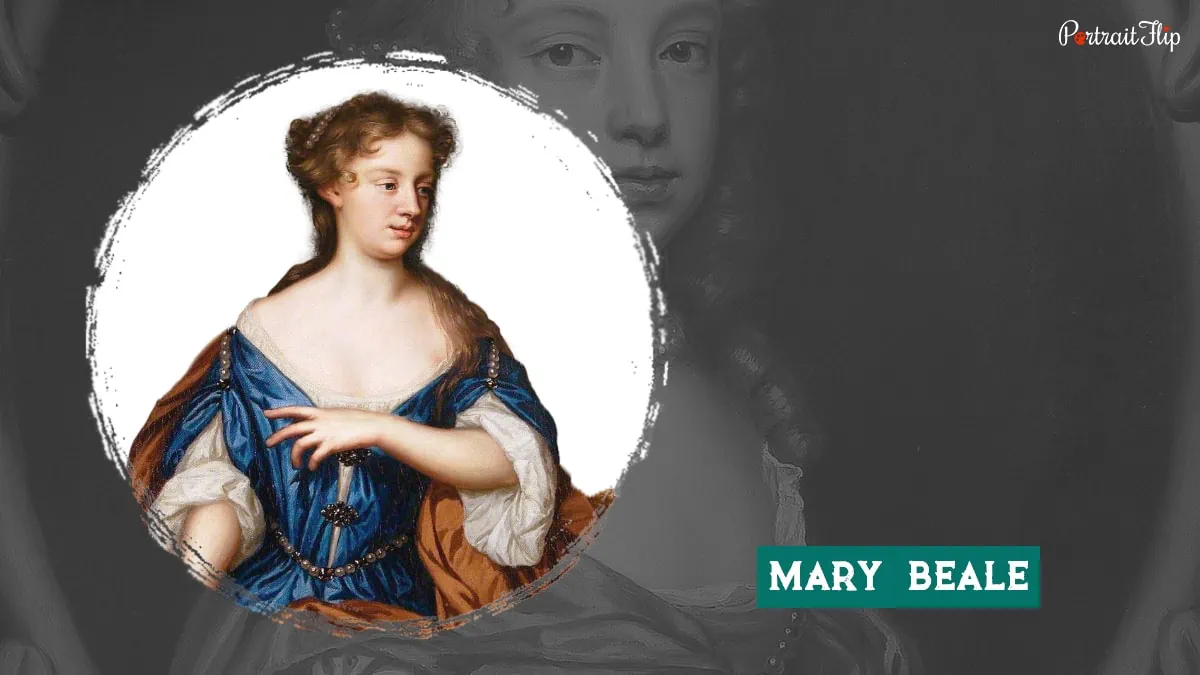
Mary Beale (previously known as Mary Cradock), was an avid painter and a writer.
She loved to use watercolors and oil paint mediums in her paintings. In the 17th century, she was part of a society of women artists that were actively supporting Baroque art in London.
Her father was a priest, and that is the reason why her paintings were majorly based on the life of churchmen and churches.
She rose to fame and started working as a professional in the late 1670’s and received the biggest support of her husband, who left his civil job and became a full time studio manager for her.
Some of her famous paintings include, Mary Wither of Andwell (1675), Lady Sadleir (1687), etc.
9. Diego Velázquez (1599-1660)

Diego Velázquez was known as the most important painter of the 17th century in Spain.
He became more popular beyond Spain’s boundaries in the 19th century when his artwork became a realistic and impressionist painter’s model.
His artwork was not only limited to his studio but it has inspired some of the greatest artists like Salvador Dalí and Pablo Picasso.
He was a master of tenebrism in paintings, and also he used bold brushstrokes and prioritized the impact of individualism in his paintings.
His artworks are now kept safely in the royal collection of the Spanish court and can be viewed at the Museo del Prado now-a-days.
Some of his famous artworks include, Old Woman Frying Eggs (1618), Rokeby Venus (1647), Portrait of Juan de Pareja (1650), etc.
10. Gian Lorenzo Bernini (1598-1680)

Gian Lorenzo Bernini was the one who developed the Baroque style of sculptures and was known as the father of Baroque sculptures.
He was famously known for his futuristic vision and inculcating harmony in the form of visual arts in the 17th century.
He created his sculptures, which represented human emotions and elegance with perfection.
He is the most famous and widely respected artist from the Baroque era.
He was very talented, as he had established himself as a master of sculpting, city planning, painting, drawing and designing as well.
He has sculpted some of the most praised and known sculptures and became one of the famous artists of Baroque.
With the proper techniques of designing and structuring, he created his sculptures and they were aligned to Baroque style.
He rose to fame from a very young age and since then he has been learning and creating art.
The prodigy of art had some of the most prestigious underwriters, namely, Cardinal Scipione Borghese, Pope Gregory XV, Cardinal Maffeo Barberini, Alexander VII, and Clement IX.
His baroque art examples include, David (1624), Saint Andrew and Saint Thomas (1627), Self-Portrait (1635), etc.
11. Francisco De Zurbarán (1598-1664)

Francisco de Zurbarán, a champion and one of the greatest Baroque artists of the era, also known as the Spanish Caravaggio, was one of the most renowned Baroque artists.
He specialized in creating paintings that depicted religious subject matter. He was a famous Baroque still life painter.
From an early age he drew using charcoal, and with time he mastered in applying the chiaroscuro effect in his paintings.
A quick fact, this Baroque artist married thrice in his lifetime.
Even though his personal life was a bit chaotic he still was one of the greatest painters of the Baroque period.
In the year 1987, Zurbarán’s artwork was an attraction in the exhibition by the New York Metropolitan Museum of Art.
In the year 1988, his artworks also traveled to an exhibition which was in Paris at the Galeries Nationales du Grand Palais.
The famous baroque artist drew a lot of artworks, some of them are, The Young Virgin (1633), Saint Francis in Meditation (1639), A Cup of Water and a Rose (c. 1630), etc.
12. Anthony Van Dyck (1599-1641)

Sir Anthony Van Dyck was a Flemish Baroque painter who was the student of Sir Peter Paul Rubens.
He was one of the famous painters of the Baroque period.
He was one of the best court painters in England and whose achievements were documented in multiple countries, including Italy and the Southern Netherlands.
People also called him Van Dyke Beard because of his facial hair style.
His unique style of painting and depiction of scenarios led him to be one of the most famous Baroque composers.
His famous works include, Portrait of Cornelis van der Geest (c. 1620), Self-Portrait with a Sunflower (1632 – 1633), Charles I in Three Positions (1635), etc.
13. Philippe De Champaigne (1602-1674)

Philippe de Champaigne was one of the pioneers in leading the French- Baroque art.
Born in Brussels in the year 1602, he later moved to Paris with his fellow Nicolas Poussin where he rose to fame by creating some of the best Baroque paintings of the era.
He was a founding member of the Parisian Académie de Peinture et de Sculpture where he guided other artists of Baroque as well.
Philippe was heavily influenced by his fellow Baroque artists but with time he started painting in more serious undertones.
During his late years of working he started creating art which went against the religious themes.
Here are some of the artworks by one of the famous painters of baroque, Saint Augustin (1645 – 1650), The Assumption of the Virgin (1656), Triple Portrait of Cardinal de Richelieu (1640), etc.
That’s It With The Artists
I tried to cover the concepts of Baroque in art and the artist’s perspective.
It is a fact that the majority of Baroque subject matter included landscapes, portraits, genre paintings, still lifes and history paintings.
Baroque artists also focused on high contrast elements to focus on highlighting subjects using intense shadows and gave the artworks a bit more dramatic effect.
There are indeed more artists from the Baroque period who have contributed to the era being a hit.
I’ll discuss them sooner or later in the upcoming blogs, so stay tuned!
Author’s Note
If you are still here, then thank you for reading this article based on the Baroque artists till the end.
Your thoughts matter to me, so feel free to leave your valuable feedback in the comment.
In the meantime, explore our reproduction paintings as well as the pricing list, which are specifically crafted to match the perfection of renowned artworks.
Also, make sure to follow PortaitFlip on social media channels, such as Instagram, YouTube and Pinterest.
Ciao Ciao!
FAQs
Michelangelo Merisi Caravaggio is known as the father of Baroque paintings from the era of Baroque art.
Baroque art was clearly the depiction of humans and the complexity of their emotions. The depiction was done through the detailing in the paintings and also by adding the effect of light and dark, also known as the art of chiaroscuro.
Baroque art established in Italy but soon made its way in the outside world as well. Furthermore, Baroque art was divided in three different styles, they are: Flemish Baroque (c. 1600-80), Dutch Baroque (c. 1600-80) and Spanish Baroque (1600-1700).
There are many famous Baroque artists, three of them are: Peter Paul Rubens, Nicolas Poussin, and Rembrandt.


